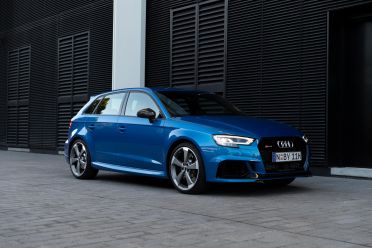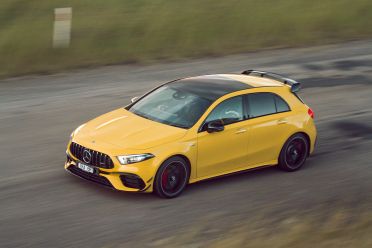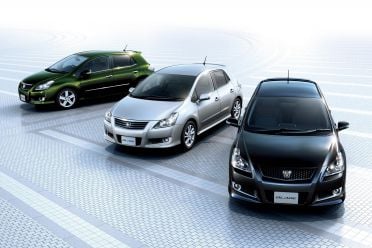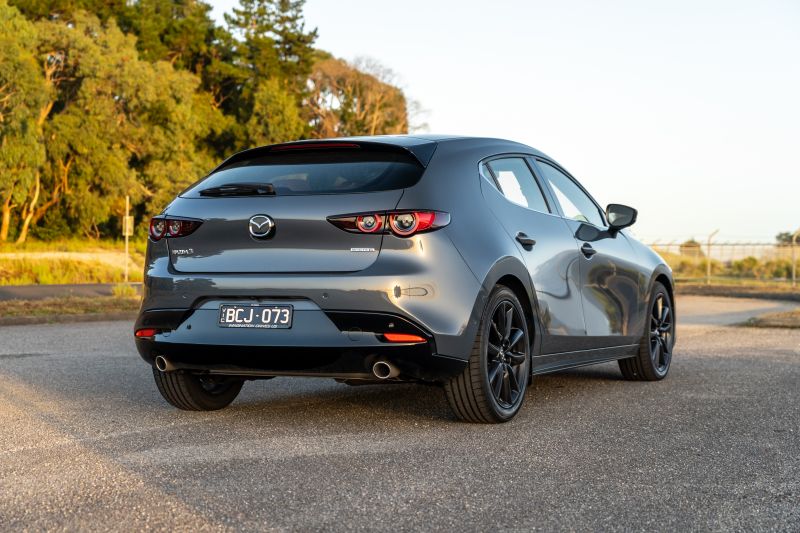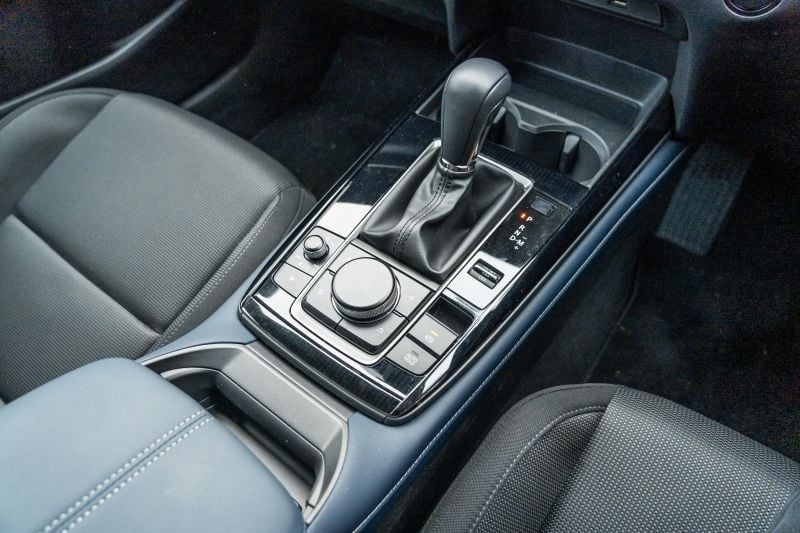Remember when manual transmissions started disappearing from supercars and high-end sports cars? There was a vocal backlash from enthusiasts about how Ferrari was sacrificing the innate human-vehicle connection a manual transmission offers.
Today, neither Ferrari nor Lamborghini sells a car with a manual. Neither does McLaren.
The supercar conversation has changed, with much of the enthusiast community accepting an automatic is typically the superior option for such vehicles.
Over the weekend, we reported Mazda is finally reintroducing a high-performance 3. While its 170kW falls a bit short of rivals such the 180kW Volkswagen Golf GTI, its 420Nm is impressive and it’ll come with all-wheel drive – there shan’t be any torque-steering theatrics like in the old MPS.
The news of another hot Mazda – with all-wheel drive, no less – should be music to enthusiast ears. And yet, I noticed a common theme in the comments section of our article and on Facebook groups: “no manual, no sale”.
Nowadays, you can’t even get a manual Golf GTI. The option remains in other markets such as the US which, despite its general antipathy towards row-your-own transmissions, still has a devoted manual transmission fanbase in more enthusiast-oriented segments.
Let’s not forget BMW developed a manual version of its E60 M5 specifically for the US.
Volkswagen axed the option of a manual GTI in Australia back in 2018, citing a low take-rate. The upcoming eighth-generation Golf GTI will still be available with a six-speed manual transmission but it’s unlikely to come here.
Hot hatches from luxury brands don’t offer manual transmissions, either. Mercedes-AMG never bothered with the A35 and A45, and both Audi and BMW stopped offering manual transmissions in their hottest hatches here back in 2018.
It seems like the hot hatch segment is at a turning point in Australia, much as what happened with high-end sports cars. These cars aren’t exclusively driven by dyed-in-the-wool enthusiasts, with German models in particular appealing to buyers who like the idea of something compact, powerful and classy.
And those buyers – and no doubt, many enthusiasts too – are seeing the virtues of a dual-clutch transmission.
Those virtues are numerous: quicker shifts, sometimes superior fuel economy, and no more knee cramps in bumper-to-bumper traffic. One wonders how the upcoming dual-clutch automatic Hyundai i30 N will fare – there’s almost no doubt it’ll very quickly overtake the manual in sales.
There is, of course, the valid argument that we’re losing variety. Even if fewer people were buying them, it was nice to have a manual Golf GTI in showrooms next to the automatic.
But we still have a decent array of manual hot hatches, including the Ford Fiesta ST and Focus ST, Honda Civic Type-R, Hyundai i30 N and Renault Megane R.S. There are still some manual warm hatches too, like the Hyundai i30 N-Line and Suzuki Swift Sport.
Is it such a big deal, then, Mazda won’t offer a manual version of the turbocharged, all-wheel drive flagship in its 3 line?
Mazda appears to be positioning the new turbo 3 less as a spiritual successor to the lairy, manual-only MPS and instead as more of a Q-ship warm/hot hatch. In a way, Mazda’s even following the classic muscle car formula – grab an engine from a larger model in the range and wedge it into a smaller model.
By putting the same engine as its jumbo CX-9 in the small 3, Mazda is also following the example of the defunct Toyota Blade Master G (above), a Corolla hatchback with a 3.5-litre V6 squeezed into the engine bay.
Ultimately, Mazda is banking on buyers wanting more power from the 3 without wanting all the boy-racer accoutrements of, say, a Civic Type R. That formula should appeal to a swathe of Golf GTI buyers, who want performance but don’t need to shout about it.
I love a manual transmission as much as many of you do, and I thoroughly enjoyed the two stick shifts I owned. While I’m sad to see the three-pedal option become increasingly rare in the new car market, it’s not as though I was buying them anymore.
And not all manual transmissions are created equal, in much the same way not all automatics are good.
Perhaps the question shouldn’t be “why won’t there be a manual?” and should instead be “is the transmission any good for this car?”
A six-speed torque-converter automatic is an outlier in a segment increasingly dominated by dual-clutch automatics, after all.
But I’d much rather a well-calibrated automatic and engine than a ropey manual gearshift that’s there for the sake of it.
The lack of a manual transmission won’t kill the turbo 3’s chances. If it was the other way around, I wouldn’t like its chances – just ask Kia about the Pro_cee’d GT. Now, let’s just hope the 3’s drivetrain is well-sorted.



